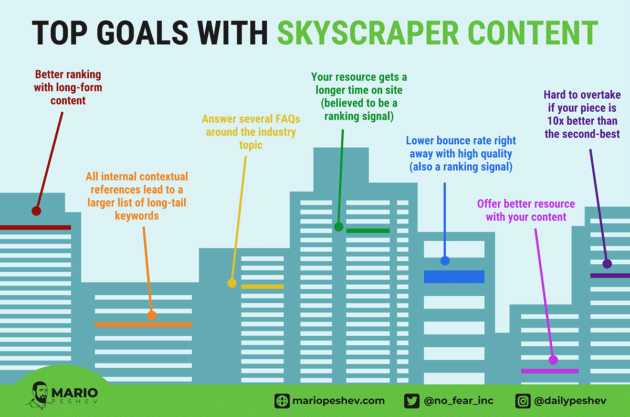The purpose of writing any long-form content is not just to get the reader acquainted with a topic but also to delve into deeper details and extract useful information in some conclusive form about the subject at hand.
Consider someone searching for information online and coming across a catchy yet informative title related to their query. As soon as they open the blog, they find only a brief introduction to the topic or just listicles! How would you feel if you were at their place? This is where long-form content comes into play as it contains vivid descriptions of the topic that leave a lasting impression on the readers.
What is long-form content?

In general terms, anything above 1000 words falls under the category of Long-Form Content. The upper limit however varies depending on a number of factors, including the focus topic, its scope, intended aims, and the targeted audience.
The central concept of long-form content writing is about informing readers about the entirety of the subject matter. Content creation involves creating pillar content that allows the readers to delve deeper into the topic they are thoroughly interested in. The best examples of Long-form content are:
- White papers.
- Case studies.
- Long blog posts.
- Tutorials.
- Guides.
- Essay-style listicles.
- Research Papers.
- eBooks.
- Reports.
Long-form content is an ideal way to dive deep into complex subjects while using a credible writing source. Going by publishing terminology, the word limit of the long-form content varies from a short story of fewer than 7,500 words to a novelette consisting of up to 17,500 words, Novellas above 17,500 words followed by novels that are above 40,000 words.
Recommended for you: 5 Content Optimization Tools for Improving Your Blog Posts.
Difference between long-form and short-form content
Image source: marketmuse.com.
These days, long-form content actually serves as a medium that allows many international brands and organizations to connect with their readers, understand their requirements, likes, and dislikes, grow their email list, generate leads, and make them more open to interactions.
While reading any long-form content, one is bound to delve deeper into the context looking for solutions, as well as take note of the comprehensibility and the style of writing. This creates an image of the organization within the masses as well as speaks of its works and processes in an indirect manner.
On the other hand, short-form content (less than 1000 words) is always considered valuable when focusing on a particular brand or story highlighting its key features. Short-form content always addresses a specific segment of a broad topic. This can take the form of a short article, a tabular comparison, or listings about the product or services a company offers in a specific domain.
How to create long-form content in 5 easy steps

It is always advised to frame target-oriented content that is both informative and gripping. We have just prepared an effective Content creating strategy for you down below that will help you structure out all the articles you write in near future:
1. Plan a layout and organize your ideas on a sheet
Before writing any long-form content, you must figure out why you are doing it and how the relevant topic will help you increase your reach to potential customers. Ask yourself the following questions:
- Who will read the content?
- What is your purpose behind writing it?
- What metrics will you use to evaluate the success of your work?
Sort through your ideas and sketch a rough layout that will help you in planning the content. While writing, it becomes crucial to maintain connectivity between the various stanzas and sentences. Retaining the content flow while writing; piques the reader’s interest ensuring he or she reads it all the way through and gets a fair idea of the topic in discussion.
2. Section off all your main ideas into headings and subheads
The readability of any content piece gets improved by dividing the content into sections. Headers and sub-headers not only help you keep things organized but also guide the reader through the content. This practice enables readers to take mental notes while reading and easily comprehend the content. Bullet points, mini-lists, tables, blockquotes, and anchor text act as effective tools for breaking up a long article.

3. Organize your paragraphs into comprehensible sections
Keep your paragraphs short and to the point. Avoid fillers and keep the content relevant to the topic. Nothing is more annoying than slogging through large blocks of filler content in paragraphs that could easily have been edited out or reduced in length. Make sure that each section adds a purpose to your content outline, and delivers the message to the reader that they actually need to read.
Do not repeat phrases unnecessarily. Do not forget to incorporate your creativity or your own voice within the content. For instance-Try to maintain freshness, prefer using bullet points when stating facts, and limit writing long sentences to avoid chaos.
You may like: How to Increase Organic Clickthrough for Your Content?
4. Decide what you want to rank for and then research accordingly
Keep your content informative, well-researched, and contextual. A topic may be subdivided into many parts. You must have a clear goal and structural approach to what you want to talk about. Stay to the point, maintain readers’ interest and write in a conclusive manner. This means that the piece of writing must clearly communicate your ideas and must be an opinion builder in itself.
The language you use should be appropriate for the platform for which you are writing. There must be no grammatical or subjective errors in the content. If your topic is an interesting source of discussion or trending in news, this will be an added plus point. Your content must resonate with the topic you choose and must provide readers with the necessary information they are searching for.
5. Optimize your content for appearance and practicality
Optimizing the content is very important from a reader’s perspective as well as an SEO standpoint. All your efforts will go in vain if you are not able to resonate well with your audience, drive traffic to the landing pages and help your brand to build credibility amongst the masses.
An important part of writing is to shape-up your masterpiece with proper formatting. Ensuring there are proper gaps within paras, polishing your writings, and the final appearance of your blog are all important parameters you must take into consideration. Maintaining your tone of writing and using snappy words also builds readers’ interest and keeps them hooked to the content. Other major points that must be taken care of include:
- Adding visuals/images to break up long sections of text.
- Giving examples for better understanding.
- Make sure to include a few inbound and outbound links.
- Use keywords to direct traffic to your blog.
- Proofreading the content for errors and comprehensibility.
- Using authentic references and citations.
- Making cross-platform sharing easier by using calls-to-action (CTAs).
- For improvement, ask the readers for constructive feedback.
What are the benefits of creating long-form content?
Image source: mariopeshev.com.
We all know writing long-form content requires carrying out extensive research, employing the best of our writing skills, and a significant amount of time to customize a single piece of content.
Yet there are many benefits of writing long-form or skyscraper content when it comes to Content-marketing for any organization. Some of them are as follows:
- Content remains for an extended time period in front of your prospective and current customers’ eyes.
- Can cover complex topics and intensive discussions in one go
- Help builds trust within the masses.
- Increases the utility and lifespan of that content piece.
- Boosts online visibility in the form of social media shares and links.
- The blogs and additional material act as proof of your authority and industry expertise.
- Allows you to share and promote quality content on a particular topic.
- Can be repurposed in a variety of ways giving the creators the opportunity to run campaigns and experiment with advertisements.
- Promotes community building and user engagement.
- Send better signals to Google.
- Longer content also results in a higher percentage of backlinks, which increases organic traffic.
- Answer several Frequently Asked Questions (FAQs) as well.
- Lower bounce rates.
Should you go for short-form or long-form content?

This depends on the requirements, the platform on which it is going to be published, and your would-be readers.
Say for instance you are introducing your audience to the festival of Halloween – its significance and celebration ideas. As we are catering to an audience who are seeking more details about how this festival is celebrated worldwide and about its origin writers
should definitely aim for a long-form article. You must outline clearly any such article with plenty of subheadings and ideas that serve as a guide to the celebration of this festival.
On the other hand, suppose you are writing for an audience that celebrates Halloween every year. They only want to know about some tools and apps that can help them edit their Halloween Pictures in the Online Mode. In this case, getting straight to the point with the listicles and explaining how to use them will be more effective in getting them to click and read them.
You may also like: How to Get More Traffic from Content Marketing?
Final thoughts

There is always a possibility of errors and improvement especially when you write long-form content. All that must be kept in mind is that it should be easy to read and understand. The content must be catchy, meaningful, and concise. To make it more interesting, use unique vocabulary and tacky words. In a nutshell, the content must be user-friendly and depart valuable information to its customers and readers.







